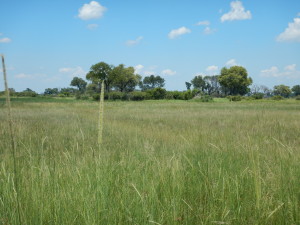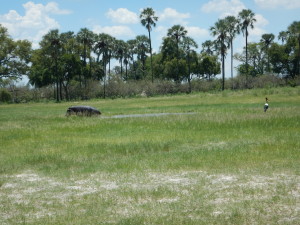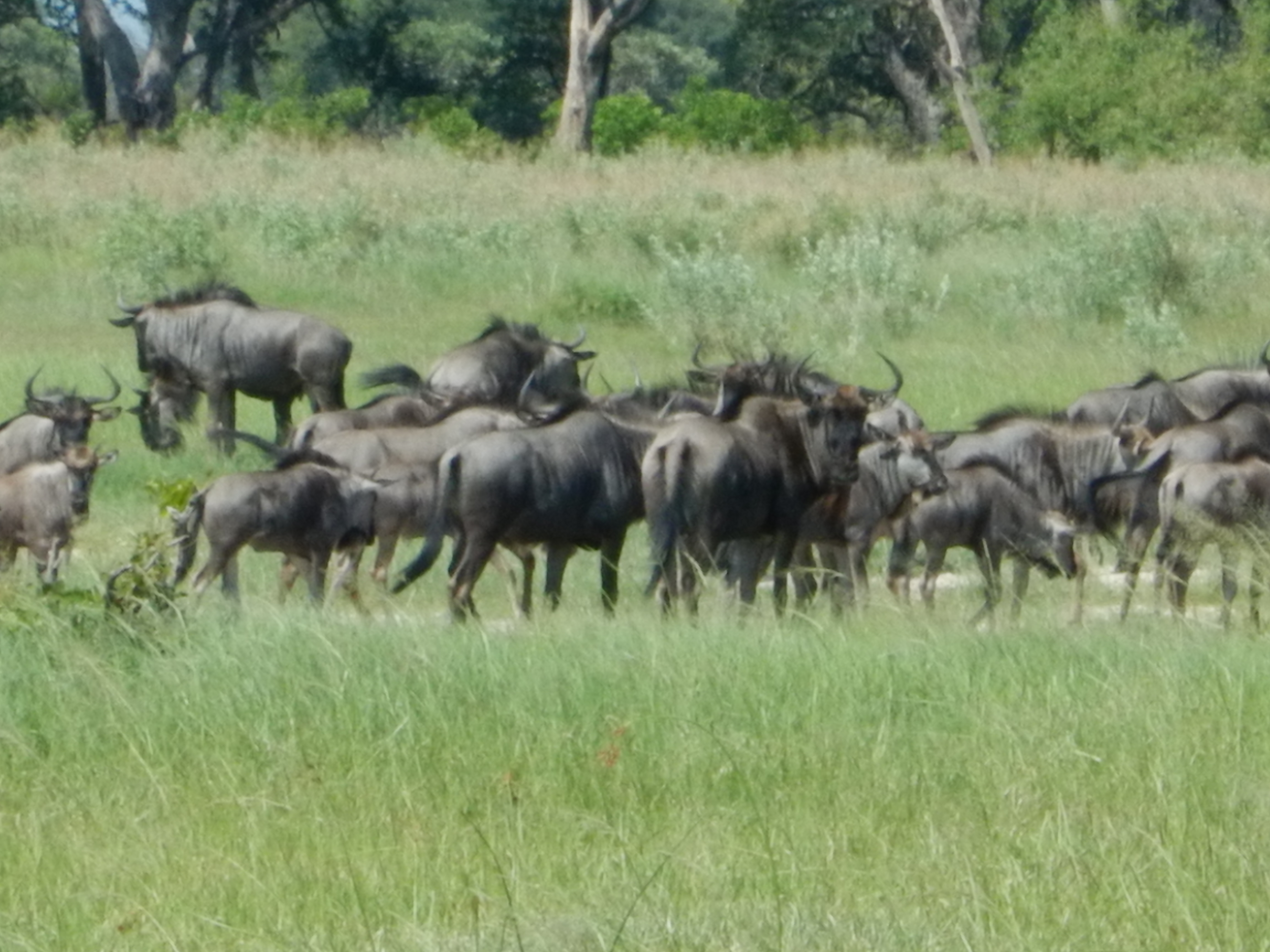This week, I accompanied staff from the Okavango Research Institute on a water run to ORI’s field station on Chief’s Island in the Delta. The rotating station staff stay at camp for a month at a time. When they arrive, they always bring drinking water from Maun, which usually runs out within two weeks. For the rest of the time, they drink water drawn from a shallow well on site. And lately, they’ve been drinking river water because the well isn’t working.
The field station is about 90 km from Maun, but the trip takes 3-4 hours in a 4×4 land cruiser because the sand track is bumpy and slow, with the occasional water crossing. The road is only drivable during the dry season. It’s hard to picture now, but when the flood comes, the entire landscape is covered with 3 meters or more of water!

We embarked on our journey around 11 am, having waited in line at a crowded local clinic for one of the staff to refill a medical prescription.
On our way there, we saw just a handful of wildlife – a lone elephant flapping its ears, a hippo in a pool barely big enough to accommodate it, a red, white, and black stork, an eagle, a few zebra, a giraffe, and a single wildebeest.


Wildebeest are almost never alone – they usually run in herds. But this one was alone and apparently bent on racing our car. It raced alongside us – some distance away, neither veering off to get away, nor coming closer to chase us. It dodged trees and raced around anthills, staying parallel with us for at least a mile, dust spraying out from its galloping hooves. When it finally stopped, it bounced and kicked some more, like it was having the time of its life.
I think the funniest animals to watch in the African bush are warthogs and wildebeest. Warthogs because they run with their tails straight up in the air – apparently so their offspring or brethren can easily follow them in tall grass. And wildebeest because they literally bounce. They are much more agile than I expected and smaller too. Wildebeest have the skinny springy legs of an antelope and the heavy shoulders of an ox. Their mismatched anatomy, coupled with general bounding bounciness is fun to watch. They can be very fast when motivated and as a herd are impressive, especially when they kick up clouds of dust in their thundering wake.
The water crossing into Moremi Game Reserve was the highlight. Like all good safari vehicles, ours is equipped with a “snorkel”, allowing air intake to the engine when most of it is underwater. To assess water depth, one or more of your company must get out of the vehicle and walk into the water, after scanning for hippos and crocodiles. We did notice a hippo off to the left, relaxing in the main channel. But he seemed pretty chill, so the guys proceeded with depth investigations.
I got out of the car as well – a good opportunity to take pictures of the hippo. Apparently the hippo did not agree. As soon as we were all out, comfortably walking around, the hippo lurched out of the water faster than you would think possible. This sent us dashing back to the car – all four of us, fumbling with the door handles, hearts pounding.
I was still outside the vehicle when I turned around. I couldn’t open the door! The hippo had disappeared into the bush and the guys were already doubled over with laughter – perhaps laughing at the funny American girl, perhaps at themselves for being spooked. But I’m guessing we were all quietly relieved that the hippo had chosen the opposite direction. They are, after all, considered the most dangerous animal in Africa – with more attacks on humans than anything else.
After further depth assessment, we all got back in the car and drove across the river. It was no more than a foot deep where we were – a testament to the dry season.
